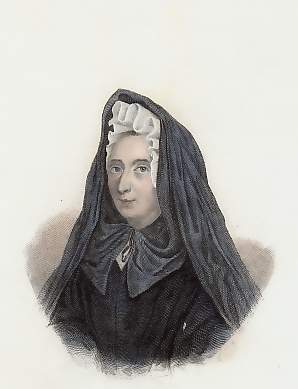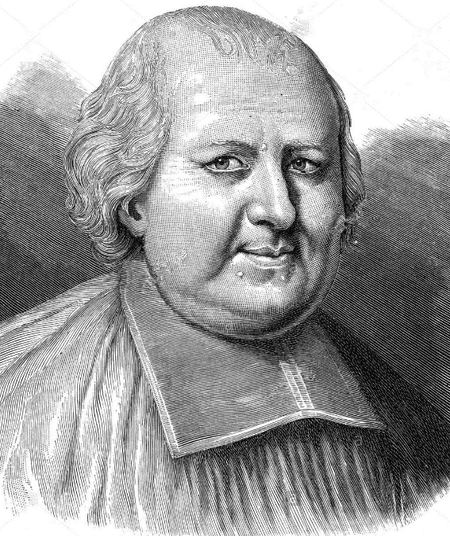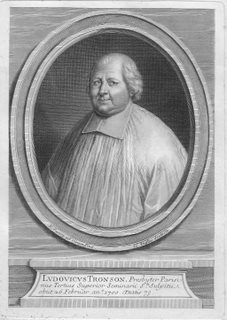Louis Tronson (1622 – 1700)
Born in Paris in 1622, Louis Tronson came from the distinguished upper crust of the Faubourg Saint-Germain, to which quite a few French revivalist Catholics of the seventeenth century belonged. Both sides of his family were close to royal power.
Etching of Father Tronson
The history of Tronson’s priestly vocation and formation are poorly known, but one can scarcely doubt that he soon came into contact with Father Jean-Jacques Olier, the spiritual director of his mother, under whose direction he also quickly placed himself. Chaplain to the king and a well-appreciated preacher in various churches in Paris, Tronson frequently heard confessions at the Church of Saint Sulpice. He decided to enter the Society in 1656. It was a great joy for Olier, who at the time was gravely ill. On hearing the news, Olier asked that the community chant the Te Deum in the seminary chapel.
A year later (1657) Olier was dead. Alexandre Le Ragois de Bretonvilliers was elected Superior to succeed Olier, and Louis Tronson became Director of the seminary, which is to say, in fact, it was he who governed the seminary. Certainly, Bretonvilliers held the title of Superior of the seminary, but in reality he was Superior of the entire Society of Saint Sulpice, which developed and took charge of numerous seminaries around France, and even engaged in the bold missionary foundation in Montreal (New France).
Tronson held the post of "Director" for 19 years, until the death of Bretonvilliers, whom he succeeded as Superior of the Society in 1676. Tronson himself presided over the destiny of the Society for 24 years, until his own death in 1700, enduring thirteen years of sufferings during which he nevertheless remained in full possession of his mental and spiritual faculties, although he was almost unable to leave his room.
The name of Tronson is well known among historians of spirituality because of his role in the controversy over Quietism. To tell the truth, Tronson did not really want to be engaged in the matter, but his reputation for wisdom and knowledge, as well as his friendship with François Fénelon, to whom he had been a spiritual director, forced him to be chosen by the protagonists to be the arbiter of this discussion:
 Madame Guyon
Madame Guyon
Madame Jeanne Guyon, Fénelon, Jacques-Bénigne Bossuet, and Louis-Antoine de Noailles, the Bishop of Châlons-sur-Marne. Because of Tronson’s infirmities the doctrinal discussions between the three churchmen took place at Issy-les-Moulineaux in 1694-1695. One cannot doubt that Tronson, personally close to Fénelon but rather circumspect about mysticism, theologically supported Bossuet, all the while managing his former directee. To this end, he is considered one of the artisans of the "decline of the mystics" (Louis Cognet), characteristic of the end of the 17th century, whose consequences for the evolution of Catholic spirituality in the 18th century historians often judge with severity.
This is not the only domain, however, where the influence of Tronson on the history of spirituality merits further study. One can even say that his participation in the discussion at Issy, in spite of the importance of the doctrinal concerns, is in a certain way peripheral by comparison to what was always Tronson’s main preoccupation in his priestly ministry, namely, priestly formation. Tronson wrote a lot on this topic. Until the 1950s his works were read a lot in seminaries. But since that time, he has fallen into neglect. His spirituality, his pedagogy, and his style are considered non-adaptable to the contemporary period.
In point of fact, however, the judgments of researchers on Tronson are universally negative. His edition of Traité des saints ordres, nearly twenty years after the death of Olier, marked an emphasis on priesthood that was more clerical, presbyteral, ascetical, and cultic than that of the Sulpician founder. And in terms of his particular examen – often little appreciated, it seems, by former students of Sulpician seminaries in the 20th century – Tronson seems to have created a model of the priest that is at one and the same time resolutely separated from the world and irremediably marked by the affinities of "the great century." In sum, Tronson would be the representative of a French clerical past, perhaps brilliant in its time, but today definitely overwhelmed [by modernity], and rightly so, given its inability to adapt to modern exigencies and perhaps even showing certain theological insufficiencies.

These judgments are severe, and it is possible that considerations more related to the crisis of priestly formation that has hit the West during the last fifty years interferes, given the scientific rigor of history and theology. Yet without a doubt there exists a “Tronson file” to take up again. Researchers who engage in this enterprise will make a precious contribution to the knowledge of this Sulpician tradition of priestly formation, which has profoundly marked the Catholic clergy, not only in France, but also in each place where the Society of Saint Sulpice has conducted its ministry to our own day. In the makeup of this tradition, Tronson is an important link in the chain. It was he who decisively imposed order on the intuitions of Father Olier and adapted them in such a way that the Society could so much better find its place in the Catholic Church and respond to the requests of bishops for the formation of their future priests.
This contribution of Tronson is not only evident in the text of Traité des saints ordres and in his Examens particuliers, but also in a number of other documents available in the archives of the Society of Saint Sulpice, including correspondence, notes of lectures and sermons, conferences, and various printed works. Beyond being the author of manuals for ecclesiastics, this man of flesh and blood, of governance and discernment, endowed with an affectionate temperament and burdened with sickness and suffering, can help us rediscover a better view of the French school of spirituality and his specific contribution to the formation of priests and the theology of the priesthood in the Catholic Church.
Article by Father David GILBERT.** Translated by Ronald D. WITHERUP, pss
**Father David GILBERT is a priest of the Community of Saint Martin. Having already written on Tronson for his Master in Theology from L’Institut Catholique [Theologicum] in Paris, Father Gilbert is now pursuing further research on Tronson for his doctorate at the same institution. His Master’s thesis is titled, Louis Tronson (1622-1700), Formateur des prêtres et théologien du sacerdoce (2011).
